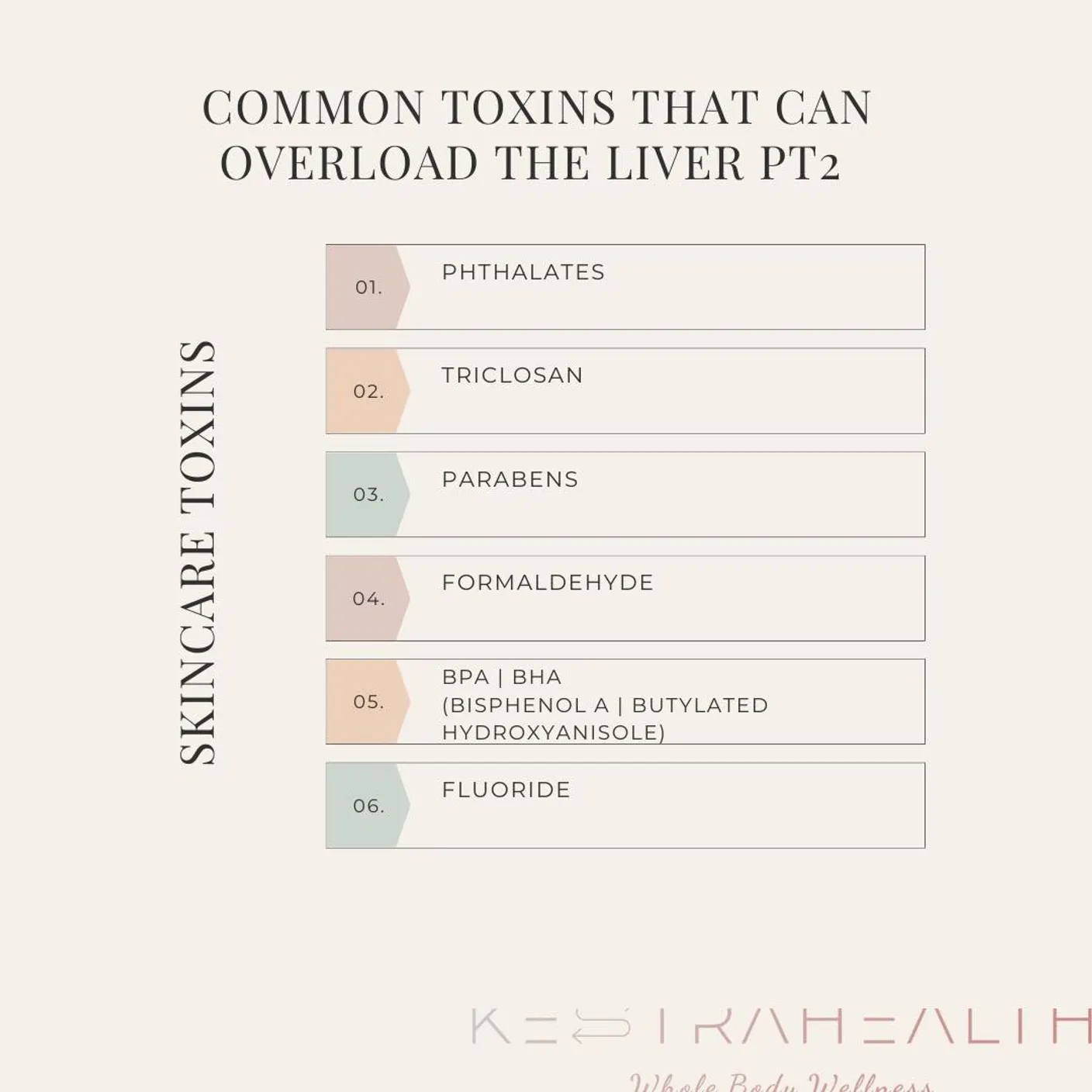The Hidden Burden (Part 2): How Everyday Skincare Ingredients Can Overload Your Liver


Welcome back to our 3-part series on the toxins that silently burden your liver, and how to reduce your exposure.
In Part 1, we explored environmental toxins like air pollution, mold, and water contaminants. Today, we’re diving into something more personal, something you likely use every single day:
Your skincare and personal care products.
Yes, what you put on your body matters just as much as what you put in it.
Your Skin Is Not a Barrier, It’s a Gateway
Most people are surprised to learn that their skincare routine could be introducing dozens of endocrine-disrupting, liver-burdening chemicals into their body daily. These compounds are absorbed through the skin and processed by your liver, your detox powerhouse.
The problem? These chemicals can build up over time, leading to inflammation, hormone imbalances, fatigue, skin issues, and more. That’s why clean skincare isn’t a luxury, it’s a form of prevention.
Top Offenders: 6 Skincare Toxins That Stress the Liver
Phthalates
Found in: synthetic fragrances, nail polish, hair sprays
Linked to: hormone disruption, reproductive issues, liver and kidney damageTriclosan
Found in: antibacterial soaps, toothpaste, deodorants
Linked to: thyroid dysfunction, antimicrobial resistance, liver toxicityParabens
Found in: moisturizers, shampoos, makeup
Linked to: estrogenic activity, breast tissue accumulation, endocrine disruptionFormaldehyde & Formaldehyde-Releasing Preservatives
Found in: hair treatments, nail products, certain makeup
Linked to: cancer risk, allergic reactions, respiratory irritation, liver overloadBPA & BHA (Bisphenol A & Butylated Hydroxyanisole)
Found in: packaging, lotions, lip balm, and sunscreen
Linked to: endocrine disruption, oxidative stress, liver damageFluoride
Found in: toothpaste, some mouthwashes, and even tap water
Linked to: thyroid interference, neurotoxicity, and added burden to detox pathways
The Big Picture: Why This Matters for Your Liver
Your liver has a full-time job: filtering toxins, balancing hormones, and converting nutrients. But when it’s overloaded with daily exposures like these, it can’t function optimally. That’s when symptoms sneak in:
- Hormonal imbalances (PMS, irregular cycles, etc.)
- Fatigue that coffee can’t fix
- Acne, eczema, or dull skin
- Mood swings and brain fog
If you’ve been “doing all the things” and still feel off… it might be time to clean up what’s in your medicine cabinet.
Start Here: Easy Swaps for Cleaner Skincare
You don’t need to overhaul your routine overnight, but awareness is power. Here are three easy wins:
- Switch to fragrance-free or essential oil–based products
- Use EWG’s Skin Deep Database to check product safety
- Ditch plastic containers where possible and store skincare in glass
Look for brands labeled non-toxic, phthalate-free, paraben-free, and EWG Verified. If you wouldn’t eat it, don’t put it on your skin.
Coming Up in Part 3…
Next, we’ll talk about internal toxins—from food additives and alcohol to medications and stress—and how they burden your liver silently over time.
We’ll also explore how to support natural detox pathways with food, supplements, and gentle lifestyle practices.
Remember: the goal isn’t perfection. It’s awareness, small changes, and giving your body the support it needs to thrive. You’re not alone in this, Kestra Health is here to guide you.
Need help reducing your toxic load or choosing safer products?
Join our upcoming 21-Day Group Detox or book a 1:1 Integrative Coaching Session with me. Let’s make this simple and doable.
Schedule a discovery call
See detox program dates
With care,
Brooke
Certified Integrative Health Practitioner | Founder, Kestra Health